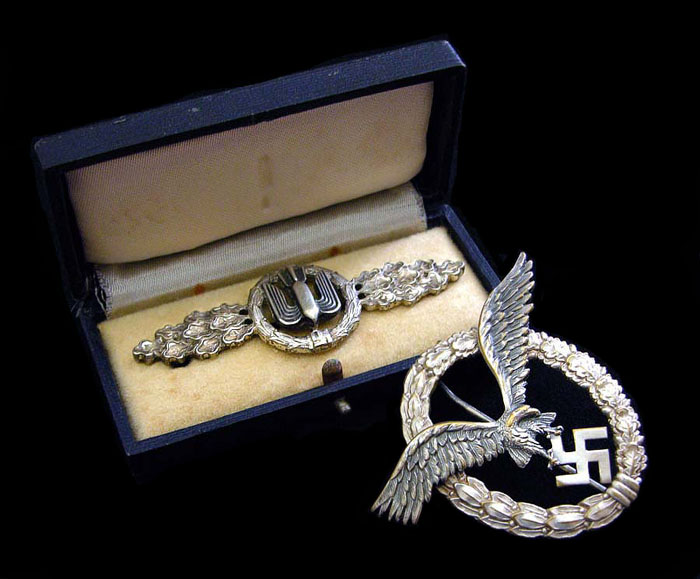
Operational Flight Clasps
(Frontflugspange)

Designed by Professor von Weech and by the order of Reichsmarschall Hermann Göring, the 'Operational Flying Clasp' was officially instituted on the 30th January 1941.
Initially the clasp was restricted to three distinctive design patterns;
Clasp for Reconnaissance, Air/Sea Rescue and Meteorological Squadrons (Aufklärer, Seenotflieger-Verbände und Wetter-Erkundungs Staffeln) having a central motif of an eagle’s head facing left.
Clasp for Heavy, Medium and Dive-Bomber Squadrons (Kampf-und Sturzkampfflieger Staffeln) having a central motif of a winged bomb pointing downwards.
Clasp for Day Fighter Squadrons (Tagjäger Staffeln) having a central motif of a winged arrow pointing upwards.
Each clasp came in three grades; Bronze (20 Operational Flights), Silver (60 Operational Flights) and Gold (110 Operational Flights).
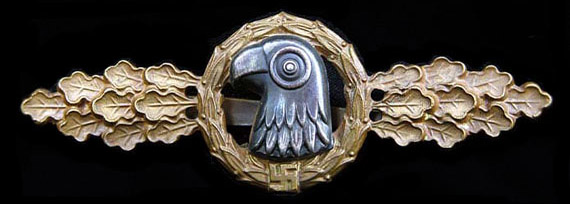
Reconnaissance Clasp in Bronze - 20 Operational Flights
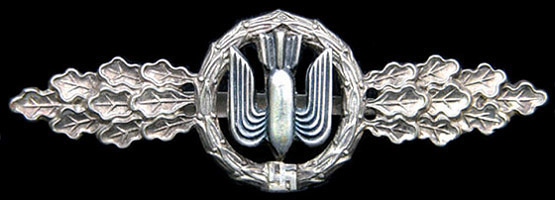
Bomber Clasp in Silver - 60 Operational Flights
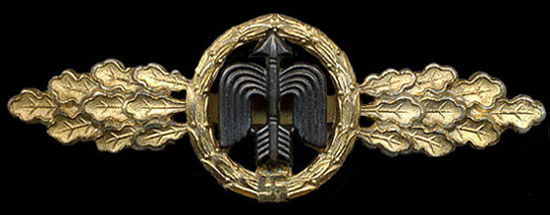
Day Fighter Clasp in Gold - 110 Operational Flights
Those eligible for the clasps were; Pilots, Observers, Radio Operators, Air gunners, Bombardiers, Flight Mechanics, members of the Engineer/Navigation Corps and war correspondents.
As the war progressed, specialized squadrons were formed which led to the institution of further clasp patterns, these being;
Date of institution – 19th November 1941.
Clasp for Transport and Glider Squadrons (Transport-und Luftlandeflieger).
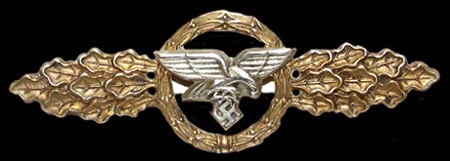
Date of institution – 13th May 1942.
Clasp for Long-Range Day Fighters and Air-to-Ground Support Squadrons (Zerstörer und Schlachtflieger).
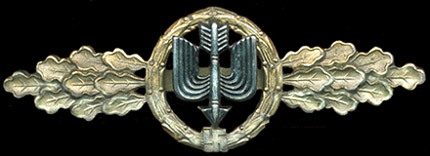
Date of institution – 14th August 1942.
Clasp for Long-Range Night Fighter and Night Intruder Squadrons (Fernnachtjäger).
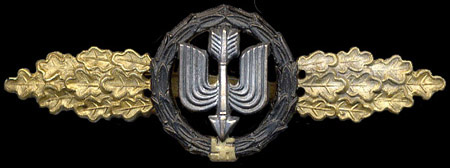
Clasp for Short-Range Night Fighters (Nanachtjäger)
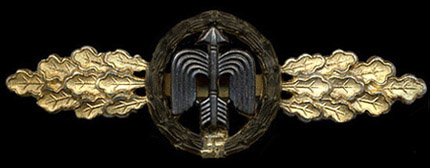
Date of institution – 12th April 1944.
Clasp for Air-to-Ground support Squadrons (Schlachtflieger).
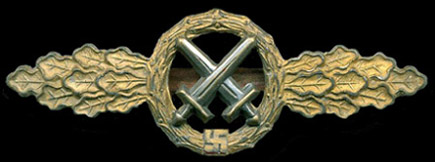
It soon became evident that the basic clasps were no longer representative of the vast amount of operational missions the Luftwaffe were flying and that there was need for
recognition for those who had reached and passed the 110 mission level. On the 26 th June 1942, a pendant device was issued. Made in zinc and finished in gold frosting/wash,
the pendant was in the form of a gold star, having laurel leaves left and right. The pendant was suspended beneath the wreath of the (110 mission) gold clasp.
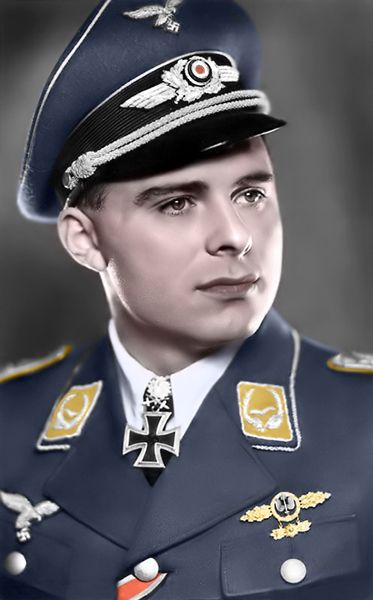
Alfred Druschel
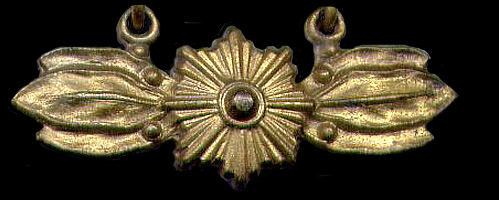
Star Pendant
Fighter and Transport Squadrons – 500 operational flights.
Dive-Bomber, Long-Range day Fighter and Air-to-Ground Squadrons – 400 operational flights.
Bomber, Air/Sea Rescue and Meteorological squadrons – 300 operational flights.
Reconnaissance and Night Fighter squadrons – 250 operational flights.
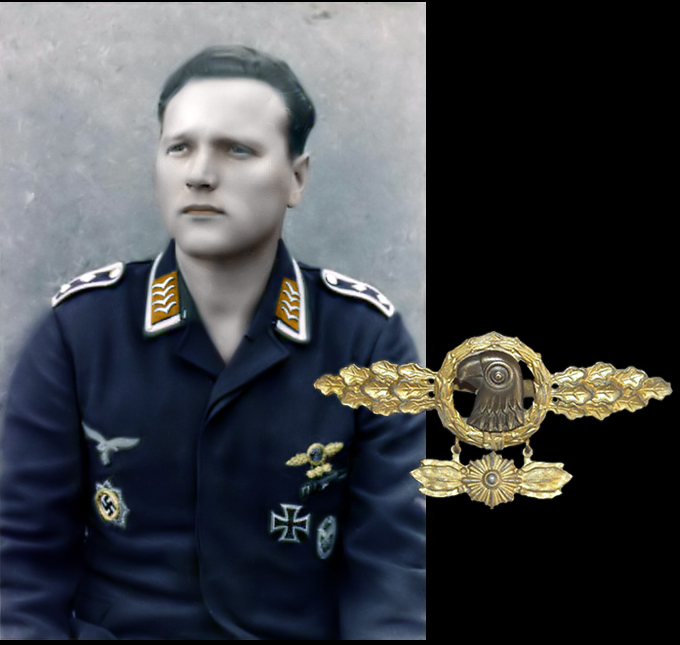
Reconnaissance Clasp in Gold with Pendant for 250 operational flights
In April 1944, as the war intensified and Luftwaffe missions increased, a further modified series of pendants was introduced to replace the 'Star Pendant'. Made in zinc and finished in gold frosting/wash, this new series of pendants were in the form of an oblong plaque, having laurel leaves at each end, bearing the number of operational flights in black. Starting at 200, the pendant showed the number of operational flights in increments of 100.

Numbered pendant
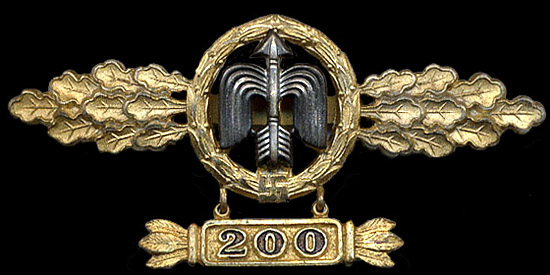
Day Fighter Clasp with Pendant for 200 operational flights
![]()
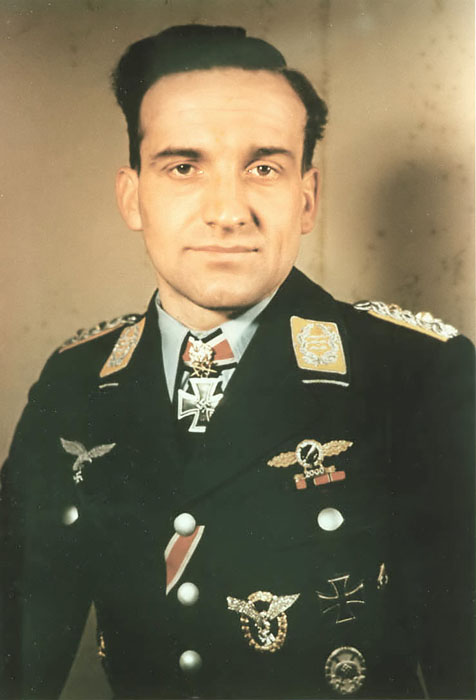
Oberst Hans-Ulrich Rudel Air-to-Ground Operational Clasp with the pendant for 2000 operational flights. The clasp and pendant were made of solid gold. The wreath and the number '2000' on the pendant were inlaid with diamonds.Operational Flight Clasps in wear
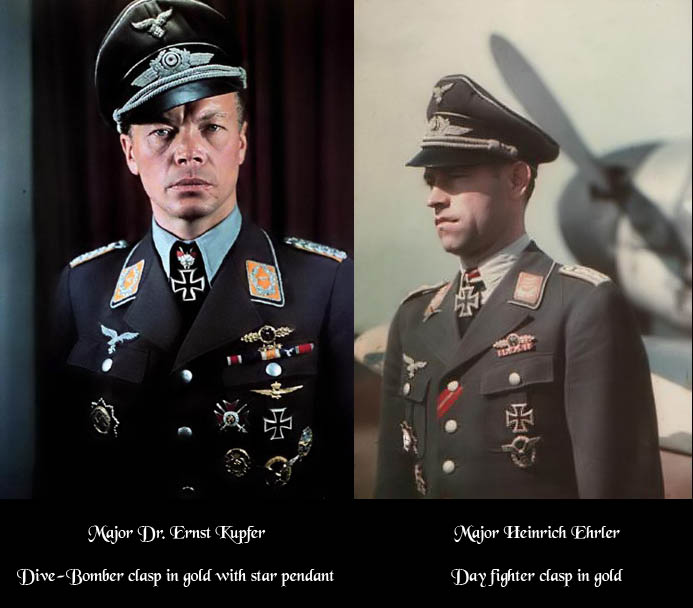
Kriegsmarine Observers
All Kriegsmarine airborne units came under the command of the Luftwaffe, all aircraft being manned by Luftwaffe aircrew with the exception of a number of Observers from the Kriegsmarine
who were placed on secondment with the Luftwaffe for a four year period for training/active duties, which included a Luftwaffe Observer's course.
Not only were they eligible for the Luftwaffe Observer Badge, they were also eligible for the Operational flight Clasp under the same criteria as as their Luftwaffe counterparts.
Kriegsmarine Observers with Reconnaissance Operational Flight Clasps in wear
Bronze Clasp for Transport and Glider Squadrons - Friedrich Linden, Lüdenscheid
Glider pilot's badge (BSW) together with the bronze flight clasp (FLL) for transport and glider squadrons